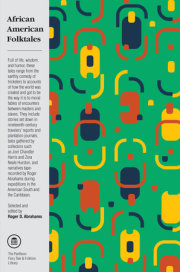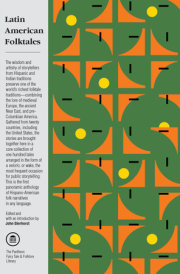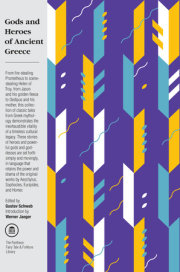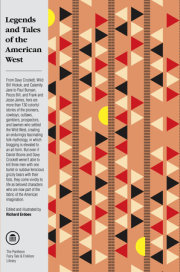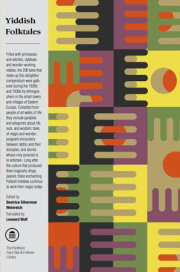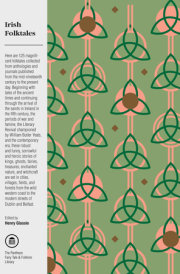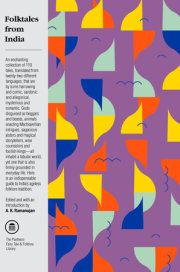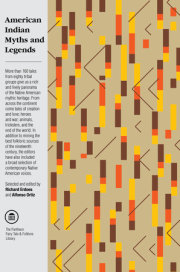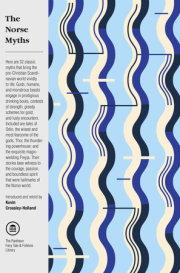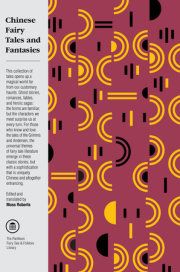TAPER-TOM WHO MADE THE PRINCESS LAUGH There was once a king who had a daughter, and she was so beautiful that she was known both far and wide; but she took herself so seriously that she could never laugh, and then she was so haughty that she said “No” to everyone who came and courted her. She would not have anyone, no matter how fine, whether he was prince or gentleman. The king had long since tired of this, and felt that she could get married like the others; she had nothing to wait for, she was old enough; nor would she be any richer, either, for she was to have half the kingdom, which she inherited from her mother.
So the king had it proclaimed from all the pulpits in the land, both quickly and soon, that the one who could make his daughter laugh was to get her and half the kingdom. But if anyone tried and failed, he was to have three strip cut out of his back and salt rubbed in. And it’s certain that there were many sore backs in
that kingdom. Suitors came from south and from north, and from east and from west, and believed it would be an easy matter to make the king’s daughter laugh. And queer fellows came too. But for all the monkeys there were, and for all the monkeyshines they did, the king’s daughter was just as gloomy and serious as ever.
Close to the king’s manor there lived a man who had three sons. They also heard that the king had proclaimed that the one who could make the king’s daughter laugh was to get her and half the kingdom.
The eldest wanted to set out first; so he rushed off, and when he came to the king’s manor, he told the king that he wanted to try to make the princess laugh.
“Well, to be sure,” said the king, “but it will be of little use, my man, for there have been many here who have tried. My daughter is so serious that it is of no use, and I don’t like to see more get into trouble.”
But the felt it would be of some use. It couldn’t be so much trouble to make a king’s daughter laugh for
him, for highborn and lowborn had laughed at him so many times when he had served as a soldier and drilled under Nils sergeant. So he started marching up and down outside the princess’ window, doing all the mistakes he used to do as a recruit. But it didn’t help. The king’s daughter was just as gloomy and serious. So they took him and cut three broad strips out of his back, and sent him home again.
When he had come safely home, the second son wanted to set out. He was a schoolmaster, and a strange figure of a man he was, too. He had legs of unequal length, and that with a vengeance. One minute he was as short as a boy, then he stood up on his long leg and became as tall as a Troll. And he was really a champion at running.
Yes, he too set out for the king’s manor and said he wanted to try to make the king’s daughter laugh. That wasn’t at all unlikely, thought the king, “but heaven help you if you don’t!” he said. “We cut the strips broader for each one who tries!”
The schoolmaster strode out on the field. There he placed himself outside the princess’ window, and he preached and said Mass like seven parsons, and read and sang like seven sextons who had been in the parish there. The king laughed so that he had to hold onto the porch post, and the king’s daughter almost cracked a smile, but she caught herself and was just as gloomy and serious again, and so it went no better with Paul the Schoolmaster than it had gone with Per the Soldier—for they were called Per and Paul, you might know. They took him, and cut three strips out of his back, and rubbed in salt, and then they sent him home again.
Then the youngest wanted to set out, and that one was Taper-Tom. But the brothers laughed and made fun of him, and showed him their sore backs; and the father wouldn’t let him go, for he said it couldn’t be of any use for
him who had no sense. He knew nothing and did nothing, but only sat by the hearth like a cat and poked in the ashes and whittled pine torches. But Taper-Tom didn’t give in. He nagged and whined so long that they grew tired of it, and at last he was allowed to go to the king’s manor and try his luck.
When he came to the king’s court, he didn’t say that he wanted to make the king’s daughter laugh, but asked if he could get a serving-job there. No, they had no serving-job for him, but Taper-Tom didn’t give up. They certainly could make use of one who could carry wood and water to the kitchen maids on such a big farm, he said. Well, the king didn’t think that could be so unlikely, and he was pretty well tired of Taper-Tom’s whining, he too; and at last Taper-Tom was allowed to stay there, and carry wood and water to the kitchen maids.
One day, as he was fetching water from the brook, he caught sight of a big fish lurking under an old fir root, where the water had washed the earth away. He put his bucket carefully under the fish and caught it. But on the way back to the king’s manor, he met an old crone who was leading a golden goose.
“Good day, grandmother!” said Taper-Tom. “That’s a fine bird you have; and such splendid feathers, now! They shine a long way off—if one had such feathers, there’d be no need to whittle pine torches,” he said.
The old woman thought just as well of the fish Taper-Tom had in his bucket. So she said that if he would give her the fish, he could have the golden goose. And the goose was such that if any person so much as touched it, he would be stuck fast if Taper-Tom just said, “Hang on, if you want to come along!”
Well, Taper-Tom was quite willing to swap. “A bird is just as good as a fish,” he said to himself. “And, if it’s the way you say, I can easily use it as a fishhook,” he said to the old crone, and was well pleased with the goose.
He hadn’t gone very far before he met an old woman. When she saw that fine golden goose, she just had to come over and touch it. So she made herself nice and sweet, and then she asked Taper-Tom if she couldn’t touch his pretty golden goose.
“All right,” said Taper-Tom, “but you musn’t take any of her feathers.” The very moment she put her hand on the goose, he said, “Hang on, if you want to come along!” The old woman pulled and tugged, but she had to hang on, whether she wanted to or not, and Taper-Tom walked on as if he were alone with the golden goose.
When he had travelled a little farther, he met a man who had a score to settle with the old woman for a trick she had played on him; and when he saw her struggling so hard to get loose, and understood that she was stuck fast, he thought he could safely give her a blow, and so he gave her a swift kick with one foot.
“Hang on, if you want to come along!” cried Taper-Tom, and the man had to follow along and hop on one foot, whether he wanted to or not. When he pulled and struggled and wanted to get loose, it was even worse, for then he nearly fell over backwards,
Now they trudged along for a good while until they were close to the king’s manor. There they met the king’s blacksmith. He was on his way to the smithy and had a big pair of tongs in his hand. This smith was a jester, who was always full of fun and rascally tricks, and when he saw this procession come hopping and hobbling along, he almost doubled up with laughter. But then he said, “This must be a flock of geese for the princess. Now who’s gander and who’s goose: That must be the gander, the one who’s jogging along in front. Goosie! Goosie! Goosie! Goosie! Goosie!” he called, and threw the corn out of his hand as if he were scattering corn to the geese.
But the procession did not stop—the old woman and the man just glared at the smith for making fun of them.
So the smith said, “It would be fun to hold back the whole flock of geese, as many as they are,” For he was a strong man. And so with his tongs he grabbed the old man by the seat of his breeches, and the old fellow began to shout and wiggle.
But Taper-Tom said, “Hang on, if you want to come along!”
So the smith also had to go along. And for all he bent his back, and dug his heels in the ground and wanted to get loose, it helped not one bit. He was stuck as fast as though he had been screwed into the big anvil in the smithy, and whether he wanted to or not, he had to dance along.
When they arrived at the king’s manor, the watchdog flew at them and started barking as if they were tramps or thieves, and when the king’s daughter looked out of the window to see what was going on, and caught site of this gang of scarecrows, she burst out laughing. But Taper-Tom wasn’t satisfied with that.
“Wait a moment, and she’ll soon be splitting her sides!” he said, and turned back of the king’s manor with his procession.
As they came past the kitchen, the door stood open and the cook was busy stirring the porridge. But when she caught sight of Taper-Tom and his flock, she rushed out of the kitchen, with the ladle in one hand and the pot of steaming porridge in the other, and laughed until she shook. And when she saw that the smith was along, she slapped her thighs and screamed with laughter. But when she had really had laughed he fill,
she also thought that the golden goose was so fine that she had to go over and stroke it.
“Taper-Tom, Taper-Tom,” she cried, running after him with the porridge ladle in her hand. “May I stroke that lovely bird you have?”
“Let her stroke me instead!” said the smith.
“So I will!” said Taper-Tom.
But when the cook heard that, she became angry. “What’s that you say?” she shrieked, and swung at the smith with her ladle.
“Hang on, if you want to come along!” said Taper-Tom; so she stuck fast, she too; and for all she scolded, and for all she tugged and tore, and as wild as she was, she had to hobble along. But, when they came outside the front window, the princess stood and waited for them, and when she saw that they had the cook along, with both ladle and pot, she burst out laughing, and laughed so hard that the king had to hold her up. So Taper-Tom got the princess and half the kingdom, and they held a wedding so grand that it was the talk of the whole land.
Copyright © 1982 by Peter Christian Asbjornsen. All rights reserved. No part of this excerpt may be reproduced or reprinted without permission in writing from the publisher.




